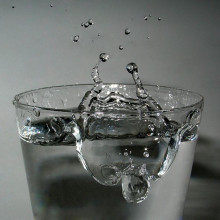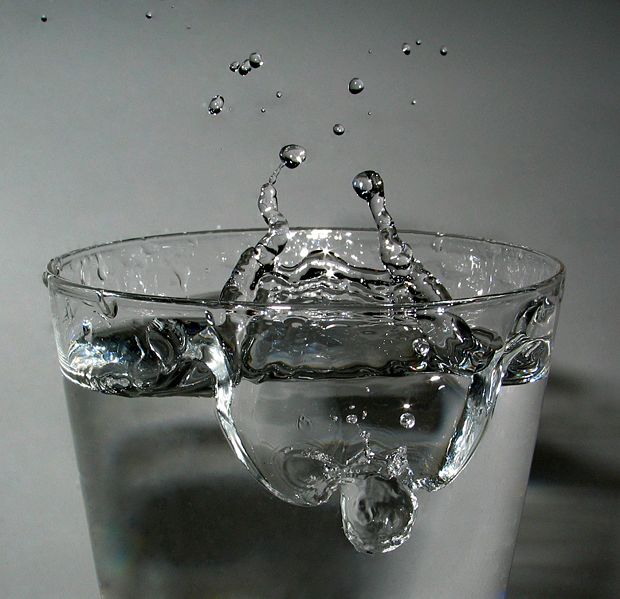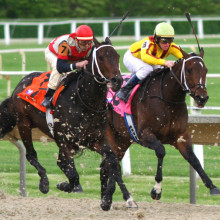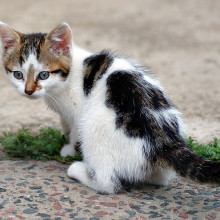On this NewsFlash, we hear how learning about a reward is a reward in itself and how a jockey's stance can shave seconds from a race. Also, how cats manipulate their owners through purring and the future of reading science online!
In this episode

The Thirst for Knowledge
Imagine you've been told you've won a prize. But you don't know how much. It could be pennies or it could be millions. Most of us would be itching to find out about the size of the prize. Now researchers in the States have discovered that uncovering information about future rewards is actually rewarding in itself, and uses the same pathways in the brain as our response to very basic rewards such as food or drink.
 This is research by Ethan Bromberg-Martin and Okihide Hikosaka, who report their results in this week's edition of the journal Neuron. They were working with a pair of thirsty rhesus monkeys, who had been trained to choose between two different images on a computer screen using their eyes.
This is research by Ethan Bromberg-Martin and Okihide Hikosaka, who report their results in this week's edition of the journal Neuron. They were working with a pair of thirsty rhesus monkeys, who had been trained to choose between two different images on a computer screen using their eyes.
In return for picking a target, the monkey randomly got either a big drink or a small drink. The key point is that looking at one image brought up a symbol showing information about the size of their upcoming reward drink, while picking the other image only brought up a random, unrelated symbol.
The researchers found that after just a few days of training, the monkeys pretty much always picked the image that told them about the size of the reward, even though it didn't affect the size of the drink they got - they just wanted to know what was coming. The researchers also did a test where the monkeys could choose to look at a symbol telling them that information about their reward was coming up, or a random symbol, and again they showed a strong preference for the information.
The scientists then looked at what parts of the brain were responsible for this, and focused on dopamine-releasing neurons, which are known to be involved in reward pathways. They recorded the activity of 47 of these nerve cells in the monkeys' midbrains, and found that they became very active when the monkeys were shown the symbol for an upcoming big drink, but the symbol for a small upcoming drink switched them off.
Interestingly, the scientists found that the same group of neurons were also activated in the tests where the monkeys only saw a symbol telling them information was on the way, but switched off if they saw the random, non-informative symbol.
This tells us that the same nerve pathways in the brain are responsible for processing actual physical rewards, as information about upcoming rewards. Dopamine neurons are thought to work by adjusting the connections between other nerve cells, helping to teach the brain about basic rewards such as food or drink. But these new results suggest that dopamine neurons also teach the brain to seek out information, as well as just basic physical needs.
Of course, this is research done in non-human primates, but our brains are very similar to those of monkeys, and it's likely that the same pathways may be at work in our brains. Perhaps these dopamine neurons are very active in Naked Scientists listeners, as they thirst for knowledge.

04:47 - Jockeys Stance Shaves Seconds
Jockeys Stance Shaves Seconds
Dr Andrew Spence, Royal Veterinary College
Chris - And also this week, there's a paper in the Journal Science that explains how jockeys have been able to shave up to 7% off their race times in the last 100 years and it turns out that it's all down to the way that jockeys sit in the saddle. They don't sit like that in that uncomfortable looking posture just for fun. There is some method to their madness and Dr. Andrew Spence form the Royal Veterinary College is here to tell us why. Hello, Andrew?
 Andrew - Hi, there.
Andrew - Hi, there.
Chris - Welcome to the Naked Scientists. So, what did you do?
Andrew - Well, so it started with the sort of a group discussion about this paper in humans where people had found that when you put a backpack on humans, it's allowed to slide up and down, they use less energy and...
Chris - So you mean bounce up and down? I think that was a Nature paper few years ago, wasn't it? When the rucksack, when a person's taking a step, the rucksack bounces up and down on an elastic band and they use less energy under those circumstances.
Andrew - You got it. Yes, it's a nice paper by Professor Larry Rome at UPenn. Basically, we thought, maybe the crouch posture allows the jockey to do the same thing and physically, what happens is that the jockey's legs act like shock absorbers and it turns out that if you're a horse, it's much easier to just keep the jockey off the ground, but not have to jiggle them up and down with each step that you take.
Chris - I get it. So, if the jockey is sat both upright in the saddle like a guardsman at Buckingham Palace, changing the guard then the horse with every step would have to lift the jockey up and down, whereas if the jockey stands up in that strange and bizarre posture, the "Martini Glass" posture...
Andrew - Yes.
Chris - Then the horse isn't physically lifting the jockey up because the jockey is basically countering the movement of the horse by bending his legs up and down?
Andrew - You got it. That's exactly right and it's hard for a human to imagine what that feels like, but I think, the closest we could get is probably to these Nepalese porters who carried big jugs of waters on these bamboo poles that can flex up and down, you know? It's easier to carry something if you don't have to accelerate it up and down each time.
Chris - How did you actually do the work?
Andrew - Well, so that was interesting. There's this whole new class of sensors coming out and basically, they're the kind of thing that's in your Nintendo Wii controller. So, it's the same chip that's in the little controller that it allows you to play Wii tennis. It's a little chip that can measure when it's being accelerated. And so, we put those in the saddle and on the jockey and we took measurements and we compared them and we saw that yup, presto! The horse moves up down a lot; and the jockey moves up and down a lot less.
Chris - Can you take that learning and make differences or changes to jockey's technique to train them so they'll make their horses to go even faster?
Andrew - Well absolutely, I mean that's, so - we don't even know. I mean, this is the tip of the iceberg really. So what would be really, really cool to do right is to get Frankie out there, get Frankie Dettori out there and then put some gadgets on him and then make some measurements on novices. You know, some of these are collaborators of the British Racing School take these. You know, they're really interested. They're young kids. They're 14, 15-year-old boys and girls who want to be jockeys and we, you know go out there and measure them, and you could compare and see how close Frankie is to perfect and who knows? You know, we could really use it as a training tool.
Chris - Sounds terrific. Thank you very much, Andrew. That was Andrew Spence who's from the Royal Veterinary College, explaining how jockeys actually move their bodies effectively, doing some of the work for the horse. That means the horse has got more energy to put in, to running fast and in fact, since 1900 when they started to adopt that posture. They're going about 7% faster.

07:55 - A Message from our Cat Overlords
A Message from our Cat Overlords
It's a well-known fact that humans don't own their cats - rather the cats own us. This is why I, Dr Kat, am a dog person. And now a report in this week's Current Biology reveals how our feline overlords manage to persuade foolish humans to do their bidding...
This is research from Karen McComb at the University of Sussex, who got her inspiration from her own cat, who wakes her up in the mornings with an insistent purr for food that's impossible to resist. And as a scientist who studies vocal communication, she was intrigued.
By studying recordings of cat noises, McComb realised that cats were mixing together a purr with a more insistent cry for food. And when they played the recordings to people, these cries were judged to sound more insistent and needy that normal purring, even to people without a cat. When the team altered the recordings to remove the high-pitched crying element, people found the sounds less urgent.
Most animals, including humans, have an innate sensitivity to needy cries - which is why we respond to crying babies or mewling puppies or kittens. If an adult cat just meows, we tend to get annoyed, but by hiding a high-pitched cry inside a low-pitched purr, it helps to send the signal that they're hungry and need feeing, without the human owner realising they're being manipulated.
McComb thinks that although cats have a small amount of the high-pitched cry in their normal purr, they learn to dramatically exaggerate in order to get what they want. She also suggests that not all cats use this form of purring at all, and it might be used mainly by cats with a one-on-one relationship with their owner, rather than those in large households, where a loud meow might be more effective.

10:43 - The Future of Scientific Journals
The Future of Scientific Journals
Emilie Marcus, Editor-in-Chief, Cell
Chris - The way that scientific discoveries get presented and published is about to undergo a big change: this week, in fact. For hundreds of years scientists have been writing up their findings and then publishing them in journals. These were effectively big science magazines and when the internet came along, many journals began to publish the material online that they were also putting into the printed edition. The problem is that the online environment isn't necessarily the same as the printed environment. So now Emilie Marcus, the Editor-in-Chief of Cell, one of the world's biggest science journals, is this week going to launch what they've dubbed 'the article of the future.' It's effectively a whole new way of presenting information and she's with us now. Hello, Emilie.
 Emilie - Hi, Chris.
Emilie - Hi, Chris.
Chris - Welcome to the Naked Scientists. Why do we need to change what we're doing at the moment? What's wrong with just putting up a facsimile edition of your printed papers on the web for scientists and doctors to download?
Emilie - Well, I guess, there's not necessarily something wrong with it. I think the current format, as you said, was developed for a print environment and is very effective for that at communicating information. But the bottom line is now we do have all the functionalities that an online environment can add to what one can do in print and really enhance the usability of the article. It's kind of like going to a movie these days and all the previews are in colour and with sound and full surround and then you get to the movie and it still a silent [black and white film]. I mean, there's nothing wrong with the silent black and white films but you can really use the new technologies that you have to improve the article, structure and form of online environments.
Chris - Indeed. I mean, when I'm trying to read papers that I'm going to talk about here on the Naked Scientists, the scroll wheel on my mouse does get a lot of use going up and down in the papers. What are you going to do to make your papers much more engaging and user-friendly on the internet then?
Emilie - Yes, so the two main points that we're trying to address with this first release of the article and feature prototypes are - one; helping users more quickly identify which papers they want to read. So, for that, we've added in the front more forms of summary of the papers. So, in addition to the traditional text abstract that's there, there is now also a graphical pictorial summary of what's in the paper and there are audio-visual interviews with the author that summarizes what's in the papers. So, depending on what you're preferred mechanism of figuring out which papers you want to read is you now have more options in going to the paper...
Chris - So the days of having to actually buy a second computer monitor, so you can display them more without going keep flicking backwards and forwards. You're saying those were over?
Emilie - Yes.
Chris - But talk us through the interface a little bit more because I know you started but- so, as I'm reading through the paper and I see, say, a little bit of information that I think very interesting. I'd like to drill down a little bit more about say, a particular reference. Can you do that?
Emilie - Yes, so all of the information now hyperlinks to the references and likewise, you can start from a the reference then go back to figure out where in the paper that reference is discussed. So the entire text is much more interconnected in the entire layouts is more interconnected and there is also a way to navigate through it based on, basically, a picture. So, you can look at a picture, an illustration and say, "Okay, this is a part of the paper I'm interested in," and click on it and it will take you directly to that part of the paper. So you no longer have to sort of start at the beginning as you did in the print environment and read from the beginning through, to find what you want.
Chris - Now presumably, you've tested this out on volunteer guinea pig scientists and another potential users. What do they say about it?
Emilie - Yes, we have had our team of guinea pigs. So far we've done user-testing and all of the responses have been incredibly enthusiastic. They liked the idea of trying to rethink from scratch how to present the information and the scientific article online. We really took a sort of bottom-up approach, let's figure out this is the information you want to get across, you have all this ability online, what's the best way to structure it and not just take what work can print and transfer it? They really liked that approach, they liked what we've come up with. They had some very good suggestions for additional features we could add. So it will be an ongoing evolving project to continue to develop an article for an online environment that has more functionality than in print.
Chris - Now obviously, this must involve additional investment on the part of your journal, in order to make this much richer online experience. So, how are you going to make it pay?
Emilie - Well, actually the investment comes up, I think, in designing the prototypes. Today, scientists put a huge amount of effort into preparing articles for publication in a print format, both in terms of the text itself and the creation of all the figures. So there already is a lot of effort that goes in to producing a paper. I think with this new type of presentation, what types of information the authors have to provide to us will change but the total amount and workload involved won't. So I think now that we set up the expectations and guidelines for what we need as publishers to be able to present the articles this way, the authors will supply us with some different types of figures etcetera, but once the transition is through the actual workload won't change. There should not be any net increase in cost to produce it in this way.
Chris - So we can all look forward to a much better online environment and we understand Emilie, it's your birthday as well today. So, thank you very much for joining us on your birthday. You can go and have that glass of champagne now. Thank you very much. That was Emilie Marcus who's the Editor-in-Chief of Cell, where they're rolling out a whole brand new way of putting information onto the internet in a much more engaging fashion, so that it should be much easier to get access to that information and then learn from it.










Comments
Add a comment